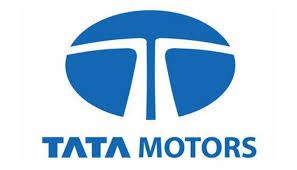
Sign up for daily news updates from CleanTechnica on email. Or follow us on Google News!
Automotive manufacturers seem to have blocked their news feeds from headlines about electric vehicles. Yet positive news about EVs persists.
- Forbes wrote recently, “Electric Vehicles Set Records: Smart Policy Can Ensure America Leads Global Markets.”
- Another media outlet proclaimed that “EVs now rival gas vehicles for reliability and longevity per new study.”
- A third read, “Nio to Launch Refreshed ES6, EC6, ET5, and ET5 Touring Models in Q2.”
Why aren’t automotive manufacturers listening to optimistic reports about EVs? The vehicle electrification market was valued at $91.6 billion in 2024 and is predicted to grow at a CAGR of 8.4% to reach $205 billion by 2034. But trade wars, geopolitical tensions, mergers, and increasing competition are all weighing heavily on automotive manufacturers and suppliers. A common sentiment is that automakers will likely cut production capacity in 2025 as they face emissions targets and tariffs; meanwhile, China’s EV dominance increases due to its edge in software and electrification.
How Populism is Influencing Automotive Manufacturing
In September 2023, Joe Biden became the first sitting president to walk a picket line when he joined the striking United Auto Workers in Wayne County, Michigan. As the Boston Review notes, in the most pro-labor White House and Congress in eighty years, “Biden pulled nearly every lever of state power to strengthen existing unions.”
Early in Donald Trump’s campaign for a return to the White House, the Republican party’s pro-common people mantra seemed weak, as Republicans’ rhetoric of speaking for the working class seemed to fall short when pressed for their real stance and issues. Then the UAW went on strike to advance labor rights and justice through wage increases, social protection restructuring, and job security amidst the transition to electric vehicles.
But Biden, as a candidate at age 82, wasn’t able to demonstrate his capacity to govern for another four years. As a last minute replacement, Vice President Kamala Harris fell in lockstep with the administration’s policies, aligning with union support as “a broad and powerful organization of the working class that could reshape American society and partner with them to end the neoliberal era,” continues Boston Review.
The labor movement flourished in 2024. Workers across sectors and interests challenged wage ceilings, sought job safety and security, and looked to unions to represent their collective interests. Emboldened by successful strikes against the Big Three, the UAW sought to add workers at non-union sites of Toyota, Volkswagen, Honda, Hyundai, Kia, Mercedes, BMW, Volvo, Subaru, Mazda, Lucid, Rivian, and Tesla.
And there’s the rub: most working-class US residents have no experience with unions in their daily lives. That’s where populism made headway real headway in the 2024 US presidential election.
Populism is a political perspective that appeals to ordinary people — like autoworkers — who feel that their concerns are disregarded by the established elite — like the Democratic party. Populism is all caught up in passion. It ignites with a grievance, real or perceived. In the workplace it might be a loss of automotive jobs due to transportation electrification. Or it could be misplaced anger at previously suppressed populations who now enter the workforce and compete for jobs. Populists cry out in emotion, frustration, and turmoil. People with populist tendencies look for a way to release that emotion, and populists often find charlatans to be attractive messengers.
Throughout his campaign, especially during his stops in Michigan, Trump criticized the push for electric vehicles, called for more tariffs on foreign vehicles, and promised to bring more manufacturing jobs back to Michigan. He flirted with the auto industry by offering false claims about Chinese auto plants in Mexico and auto industry growth under his administration.
All along, automotive manufacturers had vacillated between investing in electric vehicles or holding back for a more gradual ease into the new marketplace. To slow the ride, they promoted autoworkers’ concerns about endorsing a vision of an electric vehicle future.
Moreover, Democrats in union halls didn’t ring true to many people in the larger working class. Many Southern workers — who are a large pocket of populists — don’t have the option of joining a union. Workers in the South are the least likely of any US region to report labor union membership, at 3%. That is less than half of the percentages reported by employees in the East (15%), Midwest (9%) and West (12%).
Democrats could not change the material conditions that made Trump’s rise possible.
In Hillbilly Elegy, JD Vance writes,
“We talk about the value of hard work but tell ourselves that the reason we’re not working is some perceived unfairness: Obama shut down the coal mines, or all the jobs went to the Chinese. These are the lies we tell ourselves to solve the cognitive dissonance—the broken connection between the world we see and the values we preach.”
So, as the campaigning reached high gear, most autoworkers voted for the candidate they felt would tackle inflation and cater to their immediate needs. Trump ultimately won the 2024 election because he championed working class discontent and fear of the uncertainty of change.
One of his first acts in office was to revoke Biden’s 50% EV target, which was a goal around which policies, incentives, and manufacturing could rally. Those executive orders had immediate material impacts on EV automotive manufacturers, such as the freezing of funds designated to build new EV chargers.
UAW president Shawn Fein lamented Trump’s win the day after the election.
“UAW members around the country clocked in today under the same threat they faced yesterday: unchecked corporate greed destroying our lives, our families, and our communities. It’s the threat of companies like Stellantis, Mack Truck, and John Deere shipping jobs overseas to boost shareholder profits. It’s the threat of corporate America telling the working class to sit down and shut up.”
He questioned whether the US government under Trump would stand with the working class or “keep doing the bidding of the billionaires.”
Clean Vehicles Technologies of all Kinds at Risk under Trump
And it’s not only automotive manufacturers that wonder how and if they can move into the necessary future of transportation electrification.
Trump’s executive order to revoke federal funding for investments in manufacturing clean vehicle technologies “portends a bleak future for the jobs and communities building big trucks and buses in the United States,” according to the Economic Policy Institute. Their new report, co-authored with the BlueGreen Alliance, argues that transitioning from internal combustion engines (ICE) to low- and no-emission technologies “is a critical step for eliminating greenhouse gas and other toxic emissions from the transportation economy.”
The report also acknowledged that this transition could have serious implications for the automotive manufacturing industry, auto workers, and steel and aluminum industries, which “have long been hammered by outsourcing and offshoring, union-busting, and intensifying international competition.”
Transitioning to manufacturing clean trucks and buses could avoid these obstacles and, instead, “presents a rare opportunity to reverse these trends and revitalize long-beleaguered industries with expanding investment, creation of good jobs, and broadly rising incomes in the United States. If done wrong, the transition risks exacerbating the current trends that see companies moving production offshore or to US states embracing anti-worker policies, threatening the security of the good jobs that remain.”
Chip in a few dollars a month to help support independent cleantech coverage that helps to accelerate the cleantech revolution!
Have a tip for CleanTechnica? Want to advertise? Want to suggest a guest for our CleanTech Talk podcast? Contact us here.
Sign up for our daily newsletter for 15 new cleantech stories a day. Or sign up for our weekly one if daily is too frequent.
CleanTechnica uses affiliate links. See our policy here.
CleanTechnica’s Comment Policy




